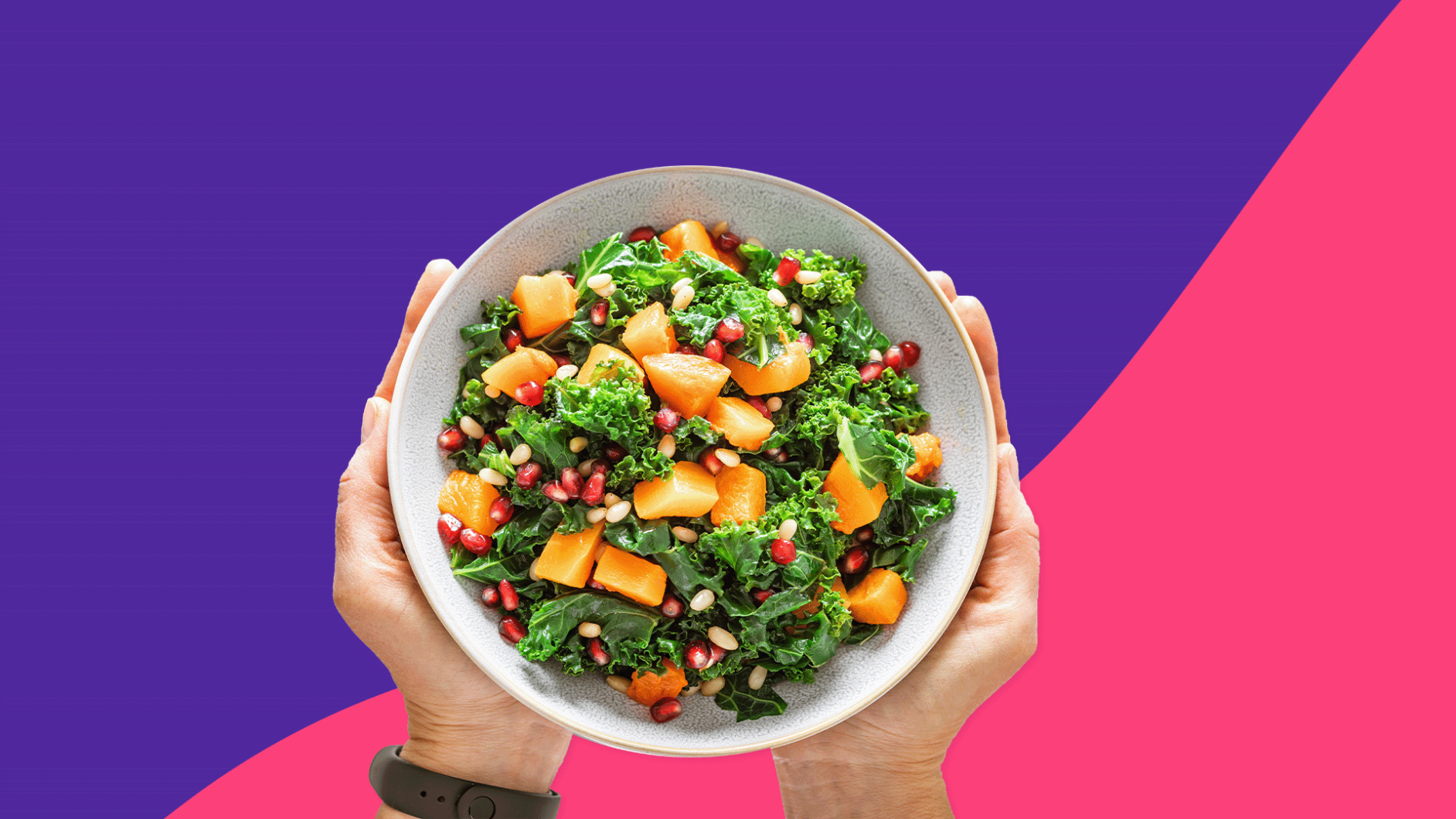One in three adults in the U.S. has prediabetes, according to the U.S. Centers for Disease Control and Prevention (CDC). That means 96 million people across America have blood sugar that is higher than normal. Prediabetes, as the name suggests, is the precursor to diabetes—a serious health condition that occurs when your body cannot properly use insulin, the hormone that helps glucose get to your cells and help your body function.
What is the best diet for prediabetes?
When you hear the word “diet,” you likely think of restricting calories for the sake of weight loss. In this case, the goal is to prevent prediabetes from progressing to Type 2 diabetes. There is no set prediabetes diet, like the DASH diet for hypertension.
“A diet rich in protein, lower in carbohydrates, and heavy on greens are the most ideal dietary practices,” says Keta Pandit, MD, an endocrinologist with Texas Diabetes and Endocrinology. That means incorporating lean meats, legumes, beans, tofu, and vegetables—while cutting back on pasta, bread, and processed foods.
“The best diet (aka way of eating) for prediabetes is the one that you can sustain,” says Erin Phillips, registered dietitian and diabetes specialist in Seattle. Diets based on restriction tend to fail because of the cycle of shame that occurs if you mess up and eat the food you’ve banned. Instead, aim to include a variety of foods.
In terms of diets with a name, Phillips does not recommend keto because “when someone has been following the keto diet and then starts introducing carbohydrates again—their insulin needs go through the roof.”
“Understanding glycemic index (GI) of different food groups can be an important tool to help balance insulin levels” because “Foods that are lower on glycemic index have fewer carbohydrates,” Dr. Pandit says. This scale rates how foods containing carbohydrates affect your body’s blood sugar from 0 to 100. The Mediterranean Diet follows many of the same tenets as the glycemic index, so, modifying it to meet your glycemic needs would likely keep your insulin levels balanced, according to The American Heart Association. The US News and World named it the best overall and best for diabetes diet in 2022.
The DASH diet, which stands for Dietary Approaches to Stop Hypertension, aka high blood pressure, also calls for whole grains, lower carbs, fruits, and vegetables over processed foods and saturated fats. Therefore, if you are already following DASH or want to, it would fit your needs for diabetes and hypertension prevention.
8 foods to eat for prediabetes
Foods that are lower on the glycemic index (GI), such as those containing complex carbohydrates, protein, and healthy fats, don’t raise your blood sugar quickly. These foods are digested and absorbed over a longer period of time, keeping your blood sugar and insulin levels balanced. Low glycemic index foods that are good for people with prediabetes include.
1. Whole grains
Unlike refined carbohydrates like white bread and baked goods, whole grains have a lower glycemic index and do not affect blood sugar levels as quickly as refined carbohydrates. Switching out white rice for brown rice, or white bread for whole wheat can make a difference to your blood sugar. Other whole grains include barley, buckwheat, quinoa, and millet.
RELATED: What are carbohydrates?
2. Non-starchy vegetables
With a high water content and little to no starch, vegetables like broccoli, leafy greens, and peppers are high-fiber foods that will not spike blood sugar like starchy veggies such as white potatoes and butternut squash. “Fiber is our best friend to improve insulin sensitivity,” says Phillips. Fresh, frozen, and canned vegetables all contain good sources of nutrients. If you enjoy vegetable juices, limit the ones with added sodium, fat, and sugar. More is better when it comes to vegetables but shoot for three to five servings a day.
3. Beans and legumes
Beans, whether black, kidney, or garbanzo, and legumes like lentils, peas, chickpeas, and peanuts, are all great sources of fiber and protein. Plus, they are low on the glycemic index. While beans and legumes do contain carbohydrates and are on the avoid list for some low-carb diets, people with prediabetes should eat them if they enjoy them because they contain low GI, complex carbohydrates. They also contain many minerals such as folate, iron, potassium, magnesium, and calcium, all of which your body needs.
4. Tofu
Made from soybeans, tofu contains plant-based protein and fiber, which is attractive to people wanting to limit their consumption of animal proteins. For people with prediabetes, it’s a good choice because of its low glycemic index with high protein and fiber amounts. Tofu is filling without having much effect on blood sugar levels.
5. Lean meats and poultry
Meat, poultry, and fish do not have a glycemic index because they do not contain carbohydrates. Meaning, they do not raise your blood sugar. Lean meats include certain cuts of beef, lamb, and pork. Some low-sodium sausages might be considered lean meat. Most poultry is also considered a lean protein. For beef, look for lean means less than 10 grams of fat and 4.5 grams of saturated fat with less than 95 milligrams of cholesterol per 100 grams of meat.
6. Greek yogurt
Unsweetened, Greek yogurt is high in protein and does not have a high GI, which means it will not spike blood sugar levels. Unlike other forms of dairy, daily yogurt consumption has been found to reduce Type 2 diabetes risk by 18%. The author of the study explains this is because “the probiotics in yogurt may help to improve insulin sensitivity and reduce inflammation.” Eating Greek yogurt with fruit in the morning, mixing it into smoothies, or using it in place of sour cream, are all good ways to incorporate it into your diet.
7. Fish
Studies show that people who eat fish are less likely to develop Type 2 diabetes. Fish is a good source of protein and vitamin D, and people with diabetes are often vitamin D deficient.
8. Nuts
Nuts have fat, fiber, and protein without a lot of carbs, so they are another good low-GI choice for people with prediabetes. Studies on people with Type 2 diabetes show that people who eat more nuts are less likely to die from heart disease. Five servings a week of nuts, with each serving being about an ounce, improves outcomes. Tree nuts such as pistachios, Brazil nuts, hazelnuts, walnuts, and almonds seem to have the most positive health effects.
5 foods to avoid for prediabetes
It’s more about balance than limitations. Focusing on “balancing” insulin levels rather than only eating low-glycemic foods is important. In other words, you don’t need to fully exclude every item below from your eating plan, rather these are high glycemic index foods that should be eaten in moderation.
1. Certain fruit
Fruit has a lot of fiber, so it’s not all bad. Eating fresh fruit can help prevent diabetes, according to studies. Ones with lower GI include berries, apples, pears, and peaches. Stick to a serving of these in conjunction with a good balance of protein and vegetables. Fruits that cause a spike in blood sugar include watermelon, bananas, and dried fruits. Additionally, you should avoid fruit juice, since it packs a sugar punch, without the fiber to slow its digestion.
2. Highly processed foods
Avoid foods like chips, packaged baked goods, cereal bars, frozen dinners, and canned soups. These have added sugar, sodium, and other additives that cause spikes in blood sugar. Unlike foods high in fiber, highly processed foods are broken down quickly, meaning that you need more fuel sooner. Studies show links between processed foods and diabetes.
3. Increased saturated and trans fats
High-fat animal products, like bacon, ground beef, cheeses, and the partially hydrogenated oils found in other foods like microwave popcorn all have increased saturated and trans fats, which are not good for preventing diabetes. The American Diabetes Association urges people to read labels and prioritize monounsaturated and polyunsaturated fats like those from fish, avocados, and olive oil. Keeping your cholesterol at healthy levels is connected to keeping your diabetes risk down.
4. Sweetened beverages
Sugary drinks like soda, fruit drinks, alcoholic beverages, sweetened coffee, and iced tea have few nutrients and no fiber. They do nothing except spike blood sugar. High blood sugar, aka hyperglycemia, in a person with diabetes, can cause complications such as coma or death if left untreated.
5. Refined carbohydrates
Like highly processed foods, refined carbohydrates such as pasta or baked goods made with white flour instead of whole grains are digested quickly, which causes a greater spike in blood sugar. Often, these carbohydrates have added sugars as well, which is why they make every list of what not to eat to avoid diabetes.
Is fasting good for prediabetes?
Intermittent fasting has been a popular diet for a while, and you may have had to fast for a glucose test in the past. But, fasting in general is not recommended for people who are at risk for diabetes or who have prediabetes or diabetes.
Phillips says that while “long-term evidence on fasting for prediabetes is lacking,” when it comes to people who fast for the purposes of dieting or weight loss, in her clinic she sees “many people swinging from fasting to feeling out of control around food, so she does not support fasting as a diet choice.
Other ways to treat diabetes
Since a third of the people who have prediabetes don’t know it, the first step for all adults is to find out if you are at increased risk of diabetes or have prediabetes—which is often asymptomatic. Your healthcare provider can run a blood test to check your blood glucose levels at your annual physical.
“Other warning signs of prediabetes may include fatigue, increased thirst and hunger, constant urination, or frequent infections,” Dr. Pandit says. If you feel you have these symptoms, you may be developing diabetes, so check in with your healthcare provider.
“All patients with prediabetes should be provided with a comprehensive lifestyle modification program that includes dietary changes, physical activity, and weight loss if appropriate,” says Dr. Pandit. If your test results are abnormal, your healthcare provider may recommend the following lifestyle changes:
- Be more active. “Incorporate 150 minutes of exercise per week,” says Dr. Pandit. Phillips says, “Whatever is enjoyable and sustainable…Muscles are very efficient at using insulin and glucose, so muscle-building practices are helpful too (think: yoga, weight lifting, picking up kids, my example of sitting on the floor and standing back up, etc.).” While cardio is often emphasized as exercise to prevent weight gain, and is, of course, good for you and preventing cardiovascular disease, slower, more muscle-focused exercise might be better for some people who want to work on sustainable diabetes prevention.
- Lose weight. “Recommendations typically aim to reduce body weight by 5%-10% via a low-fat and low-carbohydrate diet,” explains Dr. Pandit. Phillips says to “focus on sustainable physical activity (read: enjoyable) and sustainable food changes like increasing fruits and vegetables and increasing fiber” in order to reduce your risk.
- Quit smoking. People who smoke are 30%-40% more likely to develop Type 2 diabetes, and people who already have diabetes are less likely to manage their condition well if they are also smokers.
- Manage stress. “Both movement and stress management, “can have profound effects on the body’s ability to manage glucose levels,” says Phillips.
- Take medication, if needed. Some healthcare providers prescribe metformin for prediabetic patients, though some research suggests it should not be administered at the prediabetic stage. Your provider will assess your need based on your personal health history and risk factors.
- Talk to your provider about glucose tablets. If you do have any symptoms of prediabetes, Pandit says it might feel like your blood sugar is more prone to “dropping” after a carbohydrate-heavy meal. This feeling is called hypoglycemia and has symptoms like anxiety, racing heart, irritability, headache, and confusion. A fast-acting carbohydrate like honey, candy, or a glucose tablet can help you feel better.
- Work on sleep hygiene. The CDC recommends getting more than seven hours of sleep a night to help manage your insulin levels. Lack of sleep can also affect your hunger cues, leading you to make fewer positive eating choices.
- Stay hydrated. Dehydration spikes blood sugar because, with less water in your body, your blood sugar is more concentrated.
“There are no vitamins I recommend across the board,” says Phillips. Living an overall healthy lifestyle will affect your glucose, heart health, cholesterol, and mental health, so taking care of yourself is always worth it.











